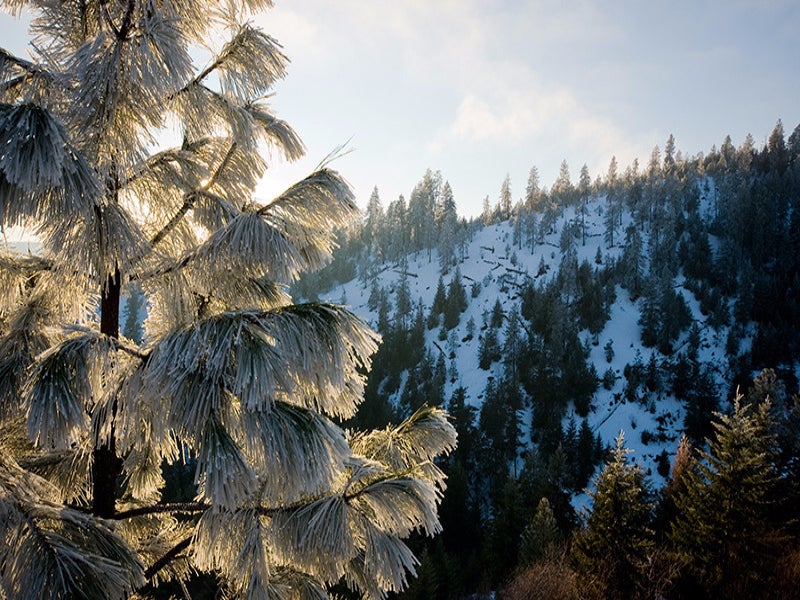Conservationists Defend Recommended Wilderness In Snowmobiler Lawsuit
Earthjustice seeks to preserve forest management plans for Kootenai and Idaho Panhandle National Forests.
Contacts
Tim Preso, Earthjustice, (406) 586-9699
,
Hilary Eisen, Winter Wildlands Alliance, (208) 629-1986
,
Geoff Harvey, Panhandle Nordic Club, (208) 762-1246
,
Brad Smith, Idaho Conservation League, (208) 265-9565
,
Amy Robinson, Montana Wilderness Association, (406) 284-1747
A coalition of conservationists, represented by Earthjustice, today requested to intervene in a lawsuit filed by snowmobilers. The lawsuit seeks to overturn restrictions on motorized use in recommended wilderness areas on the Kootenai and Idaho Panhandle National Forests.
Kootenai National Forest is located across northwestern Montana and northeastern Idaho. Idaho Panhandle National Forests is comprised of three proclaimed forests: Kaniksu, Coeur d’Alene, and the St. Joe
At issue are the Forest Service’s 2015 revised forest management plans for the two forests, which recommended certain rugged and unspoiled areas for wilderness designation. Motorized use is prohibited within their boundaries to protect wild character, and preserve the opportunity for permanent protection under the Wilderness Act. Snowmobile interest groups filed a lawsuit in November 2015 that asks a federal judge to overturn these recommended wilderness designations, and open the protected areas to motorized use by snowmobiles and four-wheelers.
“Snowmobilers already have access to 86 percent of the Kootenai forest and 70 percent of the Idaho Panhandle forest,” said Earthjustice attorney Tim Preso, who is representing the six conservation groups.
“We are standing up to defend the peace and solitude of the last pockets of wilderness-quality lands in these otherwise heavily logged and motorized forests.”
The recommended wilderness areas in the forest plans include landscapes prized for outstanding backcountry hiking, skiing, hunting, fishing, and camping, including Scotchman Peaks, Roderick Mountain in Montana and the Mallard Larkins and Selkirk Range in Idaho. These areas are home to mountain goats, grizzly bears, Canada lynx, wolverines, and a wide variety of other species, including the last remnant population of woodland caribou in the continental United States. In total, they constitute just 4 percent of the 2.2-million-acre Kootenai National Forest and 7 percent of the 2.5-million-acre Idaho Panhandle National Forests.
Earthjustice is representing The Wilderness Society, Headwaters Montana, Idaho Conservation League, Montana Wilderness Association, Panhandle Nordic Ski and Snowshoe Club, and Winter Wildlands Alliance. The groups seek to defend the Forest Service’s designation of recommended wilderness areas, eligible wild and scenic river areas, as well as its decision to restrict motorized access in these areas.
“For decades, our members and volunteers have worked toward non-motorized, wilderness protection for the most wild and deserving areas of the Kootenai National Forest. This includes lands adjacent to the Cabinet Mountains Wilderness, areas in the Yaak, and Ten Lakes,” said Amy Robinson, northwest field director for the Montana Wilderness Association.
“The extreme view that snowmobiles must have access to the entire forest would prevent long-term protection of these landscapes.”
“The Idaho Panhandle National Forests recommended a mere 6 percent of the forest for wilderness,” added Brad Smith, the North Idaho director for the Idaho Conservation League.
“It’s disappointing that the snowmobilers want to overturn what little acreage is protected under the plan. We hope that the judge will agree that wilderness is one of the many legitimate multiple uses of our public lands.”

Additional Resources
About Earthjustice
Earthjustice is the premier nonprofit environmental law organization. We wield the power of law and the strength of partnership to protect people's health, to preserve magnificent places and wildlife, to advance clean energy, and to combat climate change. We are here because the earth needs a good lawyer.
